- Home
- Brian Garfield
Target Manhattan Page 9
Target Manhattan Read online
Page 9
Perfectly, thank you. Now, the question became rather crucial and heated, didn’t it, whether Craycroft also had a gyrocompass among his instruments?
I wasn’t there at the time, of course, but I’m told that became a heated issue, yes.
Can you comment on it, in retrospect?
I would have to agree with Harris’ judgment again. The chances were he didn’t have a gyrocompass.
Why not?
The gyrocompass is one of those gadgets you have if you’re very rich or very poor. In airplane terms, I mean. Craycroft was middle-class. He wouldn’t have had one. Let me put it this way. If you have a small private plane, chances are you’ll have only one compass. It’ll be a gyro, most likely, because they’re more dependable for short-term use than magnetic compasses, whch can be deflected by heavy metal deposits nearby. On the other hand, if you’re a huge airline and you operate huge modern jet airplanes, you’re going to want to have every kind of navigational system that’s available. You’ll have probably ten different systems aboard, and one of them will be a gyrocompass—just part of the package, one of those planned redundancies so that you can double-check one instrument against another and get confirmation of your readings. But if you’re in the middle class—rich enough to afford a few extra safety gadgets, but not profligate enough to carry tons of extra instruments—then you’ll probably dispense with the gyrocompass. You’ll have a magnetic, and you’ll have one or two types of radiocompass, and that’ll be that.
You seem quite certain of that.
I am. I’m airplane people, remember? So is Mr. Harris. Also, there’s the fact that I’ve got two of Craycroft’s planes in my custody, so to speak, and neither of them has a gyrocompass—even though both planes were originally equipped with them. They’d been removed.
Why?
They’d probably worn out. They don’t last forever. It’s a very intricate system of bearings, balances, and lubricants. They have to be cared for. That’s why a good many airmen dispense with them. The radio-compass requires far less maintenance. And the magnetic compass, of course, requires virtually none. I mean it’s basically a simple Boy Scout compass. It has no machinery. As long as the needle is free to move on its pivot, it works. The only thing that can louse it up is rust. But a gyrocompass is a different animal—fragile, delicate, built to extremely precise tolerances.
Then what advantages would it offer anyone?
It offers accuracy, in those regions where there aren’t a large number of ground beacons in the radio navigation network. And a gyrocompass isn’t affected by such things as electrical discharges in storms—factors which can deflect radiocompasses and even magnetic compasses. Private planes use gyros because they often fly solo without radio beams—visual flight regulations, that’s called. They don’t want to be bothered with all the machinery of radio equipment. And of course the radiocompasses and LORANs are vastly more expensive than the gyros. But in most situations they’re also vastly more useful.
What, exactly, is a gyrocompass? How does it differ from the others?
It’s a balancing wheel. It works on the principle of inertia. It’s set to spinning at a high rate. Like a top, it keeps its balance and resists being pushed off-balance. It rotates within a sphere filled with fluid, or a complex system of bearings and pivots. Regardless of the attitude of the airplane, the attitude of the gyro remains the same with relation to the ground. It’s divorced from all forces outside the airplane itself, except—to some extent—the force of gravity. But it’s not affected by magnetic deposits in the earth, by electric charges in the atmosphere, or by freak deflections of radio beams—which sometimes happen in certain weather systems. It’s rather like a weightless, frictionless objection suspended in the middle of the cockpit. You can point your plane up, down, forward, backward or sideways, or even upside down. The gyro remains in the same position—relative to the ground—at all times, regardless of the position of the airplane that contains it.
In other words it’s a self-contained compass which couldn’t be fooled by anything taking place outside the airplane.
Exactly.
And all the other types of compass can be fooled?
Yes. By magnetic, electrical, or radio deflections.
Adler
General, could you identify yourself for our record, please?
Happy to. Adler, Michael Joseph, Junior. Brigadier General, United States Air Force. Currently stationed at the Suffolk County Air Force Base on Old River-head Road near Westhampton, Long Island. My assignment is in aircraft and component procurement. I serve as liaison with Grumman and other supplier firms in the Long Island-New York area. Do you want my serial number and other official designations?
Those won’t be necessary, General. It’s merely a matter of having your identity established, as a witness before this commission.
You’ve referred to “the commission” before, Mr. Skinner, and the Mayor referred to it that way when he asked me to meet you here. But all I see in this room is you and Mrs. Field.
Well, Mrs. Field operates our stenotype machine, of course, although we’re also recording these interviews on tape. I’m conducting the interviews in behalf of the committee. The transcriptions will be read by the entire membership, and recommendations will be made on that basis. You can take it that I’m here as the official representative of the Mayor’s commission.
That’s fine by me. It’ll probably go faster.
I hope so. Now, you were called in by whom—Lieutenant O’Hara of the New York Police?
No, it was Andy Toombes.
You mean the Deputy Police Commissioner?
That’s right.
This was on Wednesday, the twenty-second?
That’s right.
At what time of day?
It was a little after one o’clock in the afternoon. Lockheed has an office on Lexington Avenue. I’d just arrived there for a conference with some of their people. Four Oh Five Lexington. There was a message for me to call Andy Toombes—evidently he’d called the base and they’d told him I was on my way into the city. Anyhow, I called him from Lockheed, and he filled me in on what was going on. I went right down to the subway and went downtown. It was faster than surface transit at that time of day.
You went directly to the Merchants Trust Bank?
Yes. It happened Andy was just arriving at the same time. We met at the elevator in the lobby and rode up together.
To Paul Maitland’s office.
Yes. I couldn’t remember Maitland’s first name. It’s Paul, is it?
At what time did you and Commissioner Toombes enter the office?
Must have been one forty, thereabouts.
I take it you and Commissioner Toombes are well acquainted. How is that?
We’re the same age—forty-seven. Our wives were cronies at Barnard twenty-five years ago. When I was transferred up here from Davis Monthan AFB in Arizona last year, Peggy got in touch with Sharon Toombes and we started going out together as a foursome. Andy and I hit it off right away.
But you’d never had any official dealings with him prior to this?
No, it was purely social.
Then I take it the reason Commissioner Toombes called you, rather than some other Air Force officer, was simply the fact that he knew you personally.
That’s right.
Isn’t it possible he might have found some other Air Force officer who could have reached the scene earlier?
He might have, yes. But most of the AF types you’ll find right in Manhattan are recruiting-office people, that sort of thing. I’m a flier. I started out jockeying 29s and 36s. I’m a flight-line officer, not a desk commander. Andy had already talked to the AF people in the Manhattan office, but none of them knows a hell of a lot about real airplanes. They’re a pack of fat-assed politicians. He needed somebody like me. I was the handiest, by coincidence, I guess—it just happened I was in the city that day. If he hadn’t got me, he’d have found somebody else. But I don’t thin
k you can accuse him of wasting time, not on account of our friendship.
I see. Well, in any case you reached Maitland’s suite in the Merchants Trust building at approximately one forty in the afternoon. Had you been fully briefed before you entered that office?
Pretty much, yes. Andy had explained the outlines of it over the phone in about four short sentences. I’d seen the Fort from the street of course. You could hardly miss it. Hell, you could damn near count the bombs through the open bomb-bay doors, it was flying that low. People were gawking at it all over town. And Andy’d given me some of the details while we were in the elevator going up to Maitland’s office.
So you didn’t have to expend much time familiarizing yourself with the situation after you arrived there?
No, I didn’t. Anyhow I wasn’t there to be an audience for people’s explanations of what was happening.
What were you there for?
To help, if I could.
And could you? Did you?
I like to think I did. I tried to, anyhow. You’d probably be better off asking somebody else that question. I’m not the proper person to ask to evaluate my own performance.
I appreciate that, General, but we’re only trying to get the facts. Now, at the time you arrived there was barely more than an hour remaining before the deadline Ryterband had set. Is that right?
We had about eighty minutes, I was told.
At that time, I’m informed, you submitted a rather brilliantly succinct analysis of the situation.
Who the hell told you that?
Toombes.
Son of a bitch. Did he actually use those words?
Yes, he did.
He was overstating it, you know.
Perhaps. In any case I wonder if you could recap for us now what you stated then?
Well, I’d seen what was going on. I mean Andy had told me what was going on, and anybody with two eyes could see how it was shaping up. But a lot of them seemed damn confused about the mechanics of it. I mean, most of them didn’t have any experience dealing with airplanes in a combat situation. All I did was tell them what their options were. I gave them the facts. It wasn’t up to me to make decisions about what to do. I didn’t have the authority to decide whether they should pay the ransom or not, for example. That wasn’t my department. My department was the airplane and the available possible methods of dealing with it.
You mean there were ways to deal with it.
There are ways to deal with any threat. But you have to decide whether they’re worth the risks involved. You can neutralize any kind of guerrilla extortion—hijacking, kidnapping, whatever—but you’ve got to be prepared to accept the possible consequences.
You’re saying, I think, that the people in charge had the option of simply refusing to knuckle under. But you said a moment ago that it wasn’t your department to make that kind of suggestion.
It wasn’t, although if it had been up to me I’d have made that decision. To refuse the demands and tell the son of a bitch to go to hell. I mean, for my money, all they had to do was tell it to him straight. He had his radio wide open, he could hear them when they talked to him. He was in communication with his partner there in the office.
Charles Ryterband.
Yeah. I’d have told him to go to hell. I’d have pointed out the consequences to him. “If you kill one single soul in New York City, you’ll die yourself. You’ll be shot down like a dog.” He’d have backed off. Hell, what choice would he have?
It seems pretty clear he was demented. You can’t depend on a deranged man to act sensibly. A man in normal mental health wouldn’t have tried what Craycroft was trying in the first place.
In my opinion, Mr. Skinner, you have to consider the long-range consequences of any such decision. If you knuckle under to the first Craycroft, then you can be damn sure there’ll be a whole army of imitators who see that Craycroft got away with it, so they’ll decide to try the same thing, or a variation on it. Give in to the first one, and pretty soon you’re going to have a bomb threat every week. That’s what happened all over the world with these guerrilla kidnappings, these airplane hijackings. All it takes is one successful plot, and every half-baked screwball in the world decides to get on the bandwagon. You’ve got to cut these things off at birth, that’s my opinion. But screw it. You and I could sit here for months debating the philosophy behind these decisions. They’re essentially political, not military. They’re out of my bailiwick. I’m not here to testify about that, am I?
Well, I appreciate having your views, General. In any case, according to Mr. Toombes you provided a quick precise analysis. I wonder if you’d recap that analysis for me now?
I’ll try. Look, I was in uniform that day. I must have looked pretty good to those guys right then. Maybe they thought I had some magical solution to offer. How to just reach up and turn that thing off, or something. I mean I was supposed to be The Expert, in caps. I walked in the room and they all looked to me for something. I had to set them straight, and I had to do it fast because they didn’t have time to waste hoping for magical answers from me. You follow?
Yes, I think so. Go on.
As near as I can remember, I told them something like this. You’ve got several options. You can threaten him, you can try to shoot him down, or you can try to deflect him off his course and get him out over open water and then shoot him down. Now, each of these courses is—as they say—fraught with peril.
Yes.
Basically it’s a question of how do you stop a bomber. Well you can’t build a brick wall in front of it. You can’t reach up with a skyhook and pull it out of the way. There are all kinds of things you can’t do. There’s a few things you can do, but you’ve got to weigh the risks of each.
I take it you enumerated those things?
Yes. First, you can send up a plane—an armed Air Force plane, we could get a fighter up there in maybe fifteen minutes if we had to. And shoot him full of holes, maybe get in some cannon fire and blow the son of a bitch up.
But?
We’re told he’s got armed bombs inside that open bomb bay. Suppose you blow him up in midair with an air-to-air missile or cannon and machine-gun fire from the air? You’ve got live explosive falling on New York City. Are you prepared to risk that?
Go on, please.
Okay, next. Ground fire. Antiaircraft. SAM missile. Whatever. Same scenario, same risks, same objection.
You proposed more options than those two, didn’t you?
I probably proposed a dozen or more. I don’t know if I can remember them all. Some of them were pretty fanciful.
Such as?
There’s a drag that’s used sometimes in forest fire-fighting operations. Kind of a wide mesh-type fishnet, suspended from two or more airplanes. They use them to smother fires in certain conditions. Anyhow you could hang a mesh between two powerful jet aircraft and simply scoop the guy right up out of the sky and carry him off.
Very ingenious.
Sure. Eat where are you going to find gadgetry like that in New York City when you’ve got barely an hour before the deadline?
Continue, General.
This one wasn’t mine. I think it was the FBI man—Hazard?
Azzard.
Yeah. He suggested using a laser beam. Like James Bond. Cut the bomber in half or something. Same problem there, of course. Where are you going to get a laser gun on short notice? In any case I don’t even know if there’s such a weapon in existence, except on somebody’s drawing board. Well, anyhow. I said they could always just put a radar tail on him—from the air and from the ground—and just go ahead and pay the ransom, and then pick him up when he landed. Sooner or later he was going to land. What goes up must come down. Of course that was the obvious answer. It was too obvious.
Why?
Several things. One, nobody was sure at that point whether they were going to be able to raise the money in time. Two, it was easy enough to put a tail on the plane but it might not be that easy to put a ta
il on Ryterband and keep it there—and Ryterband was the one who was collecting the money. Three, the whole plan had been worked out in pretty good detail by Craycroft, and it was hard to believe he’d gone to all that trouble without figuring out a pretty good escape trick for himself. He might have anticipated radar surveillance. In fact, he almost certainly had. He was an airman, he wasn’t ignorant.
Nevertheless, he was quite bent, wasn’t he? He might have simply ignored that sort of thing in his plans.
I don’t believe that. There’s a big difference between crazy and stupid. Some of the looniest people I’ve ever known were brilliant. Superbly logical.
Go on with your analysis, General.
There was a Port Authority helicopter flier there, a man named Woods. He’d watched the bomber’s flght pattern. I don’t know if any of them had figured out what Craycroft was doing. So I told them what he was doing.
To wit?
He was confining his circle to a route that kept him constantly above heavily populated land surface.
In other words there was no point at which he could be shot down over water.
Exactly. He crossed the East River twice in his flight path, but he never did it quite the same twice in a row. And the East River’s a narrow channel. He was making it a point to cross it in the area of the three bridges—the Brooklyn, the Manhattan, and the Williamsburg Bridge. A few times he flew out above the Brooklyn-Manhattan bridges—they’re quite close together—and made his U-turn over Brooklyn and came back the same way. Other times he’d make his outward crossing above the Brooklyn Bridge and make the return pass over the Williamsburg Bridge, which is a little way upstream. But if we’d tried to shoot him down there, we faced a pretty good chance he’d crash into one of the bridges if he didn’t hit the populated areas. And those bridges are damned expensive to replace, not to mention the constant traffic on them.

 Marshal Jeremy Six #3
Marshal Jeremy Six #3 Marshal Jeremy Six #6
Marshal Jeremy Six #6 Marshal Jeremy Six #5
Marshal Jeremy Six #5 The Outlaws 2
The Outlaws 2 Marshal Jeremy Six #7
Marshal Jeremy Six #7 The Lawbringers 4
The Lawbringers 4 Marshal Jeremy Six #4 the Proud Riders
Marshal Jeremy Six #4 the Proud Riders The Romanov succession
The Romanov succession Marshal Jeremy Six #8
Marshal Jeremy Six #8 Sliphammer
Sliphammer Line of Succession
Line of Succession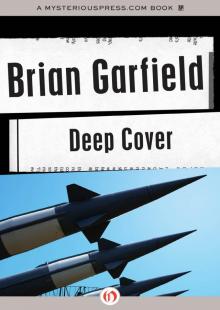 Deep Cover
Deep Cover Kolchak's Gold
Kolchak's Gold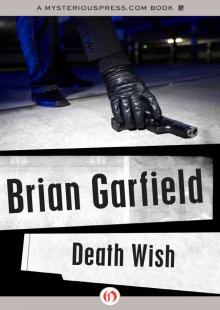 Death Wish
Death Wish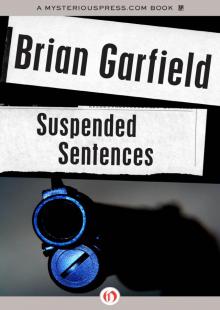 Suspended Sentences
Suspended Sentences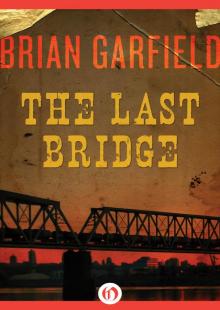 The Last Bridge
The Last Bridge Relentless
Relentless The Vanquished
The Vanquished The Last Hard Men
The Last Hard Men Hit and The Marksman
Hit and The Marksman Villiers Touch
Villiers Touch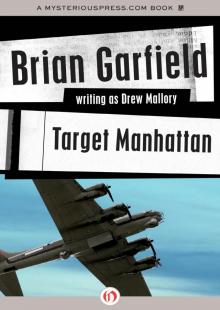 Target Manhattan
Target Manhattan Marchand Woman
Marchand Woman What of Terry Conniston?
What of Terry Conniston? Threepersons Hunt
Threepersons Hunt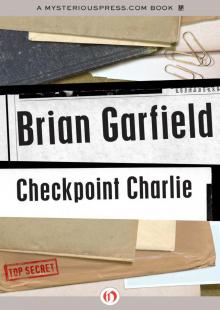 Checkpoint Charlie
Checkpoint Charlie Romanov Succession
Romanov Succession Necessity
Necessity Death Sentence
Death Sentence Fear in a Handful of Dust
Fear in a Handful of Dust Hopscotch
Hopscotch